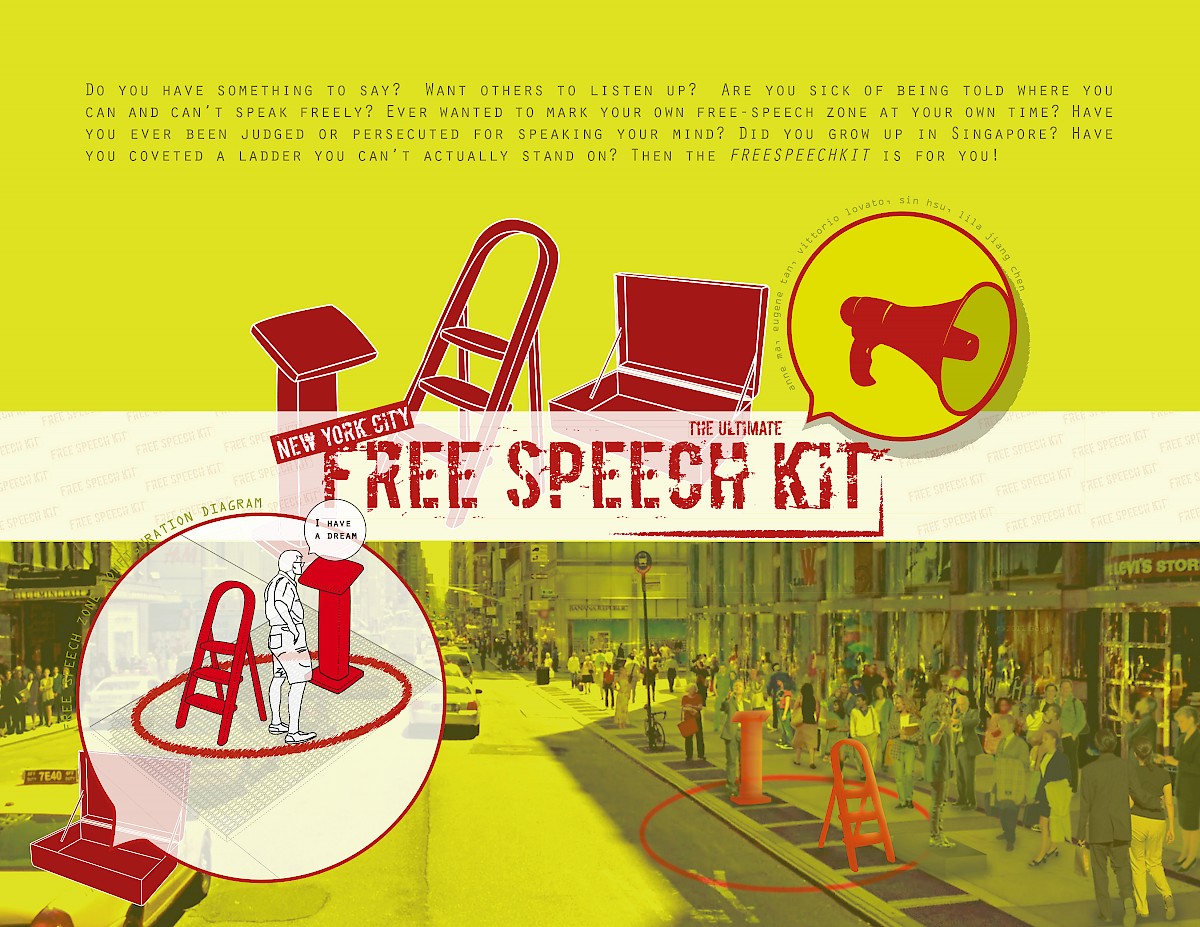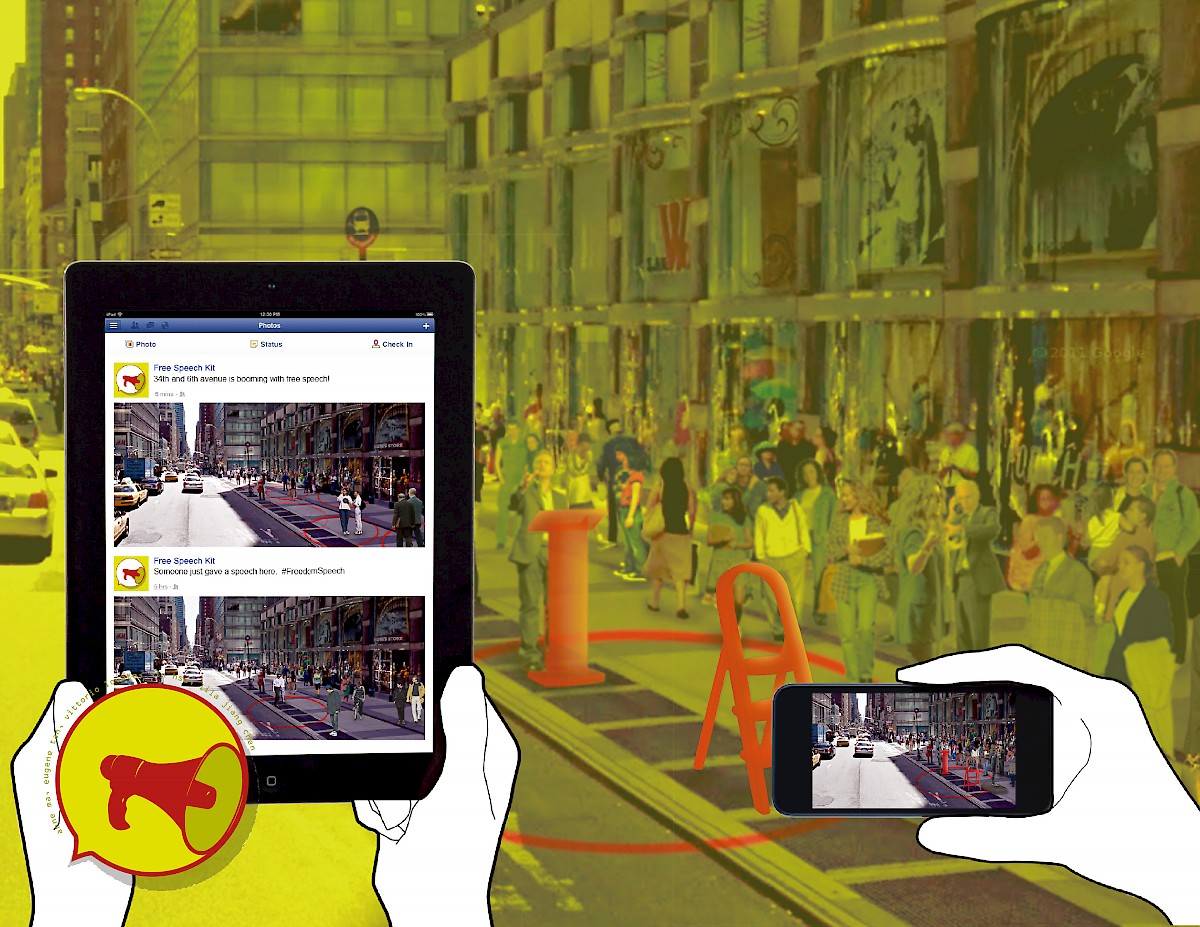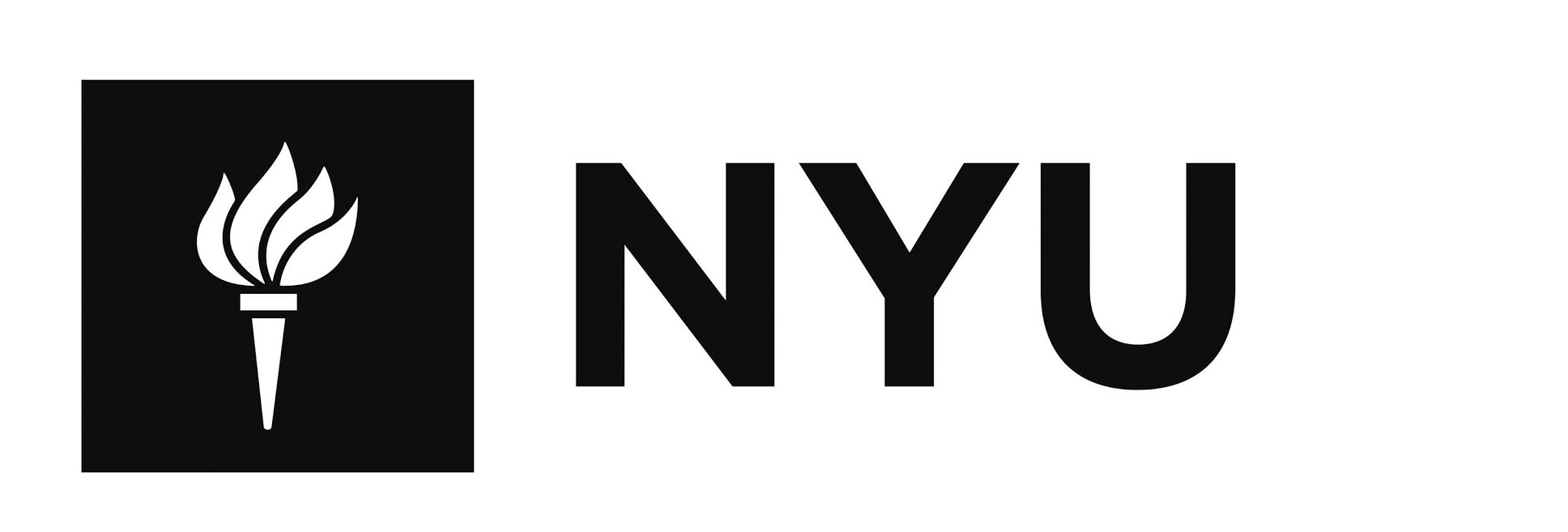#568 THE ULTIMATE FREE SPEECH KIT
IDENTIFY A PUBLIC SPACE
In the circuit board that is New York City, the streets are its electrical pathways, transferring data in the form of people. To keep the city ticking, there cannot be respite; people must keep moving. The Manhattan grid not only controls this movement, but neglects spaces that encourage New Yorkers to pause. Because of this bind, the streets of New York should not be treated as mere infrastructure, but as public space. However, to transform infrastructure into spaces for the public, activation is necessary. Free speech may be one way of doing this. In its consummate state, free speech is not limited to a single person, place, time, or medium. The designation of 'free speech zones', for instance, is inherently contrary to its ideals, while the use of audio or visual amplifiers weakens the freedom of others to retort, or decline to listen. To this end, the streets of New York are an ideal location for free speech. Always defined by two intersections, it has a measure of specificity, yet is part of a greater, dizzying network. A symbol of positive change, free speech is not given rarified status, but enters the space of the everyman. It is there that the 'happenin' of free speech is most necessary, and potent. With the street’s high visibility and footfall, free speech permeates contemporary society, even beyond the physical boundaries of New York. It transforms the streets into pathways where people not only move, but share; pause; think; and listen – public space.
DESIGN PROPOSAL
Acknowledging the placeless, yet pervasive qualities of free speech, the proposed design is a Free Speech Kit that members of the public can locate, set up, and drop off. The items within the Kit, enable the New York street to be activated – both as a place of 'happening', and more specifically, as a space for free speech. The latter is declared by two inflatables, the Symbolic Speech Apparatus, and the Symbolic Debate Apparatus. They bring to mind the ladder and podium, two objects long associated with informal speech and debate. Additionally, the inflatable recalls an entire lineage of civic activism. One object denotes the location where free speech is occurring, while the other expresses the two-way nature of free speech, encouraging spectators to either rebut or simply speak up. Being inflatables, the Apparatuses cannot be stood on; function is detached from the image, distilling their symbolic importance. Finally, the Kit's Free Speech Circle helps mark the location of these civic episodes, raising awareness of free speech through an associational motif. The affiliation of these circles and knowledge of past occurrences, layers our everyday spaces with meaning and memory. As an assembly on the street, these items also mediate between the desire to announce a 'happening', and express deference to pedestrians, not wanting to diminish others' right to the street. With the inflatables easily stowed away, the Free Speech Kit is lightweight and ergonomic. It moves with the public, accommodating their modern mobile lifestyles, while facilitating their freedom of speech.
IMPLEMENTATION
Free Speech Kits can be picked up from railings around subway station staircases. Across New York, these spots mark the interface between two types of infrastructure. This location is convenient for those who emerge from the subway and take to the street, as well as those who choose to take a Kit further out using the subway. The inflatables inside the Kit are not only easy to set up, but also quick to pack up – before being returned to a nearby pickup point. The Kit and its contents take advantage of New York City's urban features. Firstly, in the way Free Speech Kits are secured to railings, and also in the way inflatables are secured to metal ventilation grilles on the sidewalk. This regularity allows for mass production where economies of scale can be more easily attained and making the Free Speech Kits economical to implement. As an idea and urban feature, the Kit may be of interest to organizations such as Project for Public Spaces, and free speech activists such as the Bill of Rights Institute. An amiable launch platform and suitable cross-promotion may be found during Free Speech Week, the annual event which resonates within New York. Mobile, inexpensive, and reusable, the Free Speech Kit is not only a sustainable and tangible proposition, but opens itself to the real possibility of becoming a contemporary symbol of free speech.
TEAM
With each member representing a different nation, diverse views toward free speech and placemaking were brought to the table, shaping our design proposal.
You Zhi Eugene Tan (Singapore)
Having grown up in Singapore, Eugene quickly identified ways in which free speech (in its purest form) could be threatened. We addressed those concerns, designing something that is not limited to a single person, place, time, or medium.
Cynthia Hsu (United States)
A US citizen, Cynthia is intimately familiar with New York and its streets. She has always lamented the dearth of public spaces in New York, and the placelessness the Manhattan grid induces. An artist by training, Cynthia felt our design should not only add life and vibrancy to the streets, but leave a benign trace – connecting past to future, and calling others to action.
Vittorio Lovato (Italy)
Keenly interested in how digital environments and social media affect our understanding of physical space, Vittorio argued that free speech should occur in our everyday spaces, maximizing its potential to enter the digital realm and beyond New York. He also felt it should also add to the collective memory of New York, giving the streets layers of meaning.
Lila Jiang Chen (Panama)
An architecture student and urbanist, Lila has studied the work of Ant Farm, as well as Tools for Actions (formerly Eclectic Electric Collective). She felt that the use of inflatables would not only extend the historicity of activism and civil action, but had an intentionality which forfends flippancy.
Anne Ma (Canada)
With an acute graphic sensibility and a background in animation, Anne pointed out how the Free Speech Kit – as an idea and a package – needed to be imageable. She also championed the need for an urban marker and associational motif, aiding the speaker in declaring a 'happening'.





